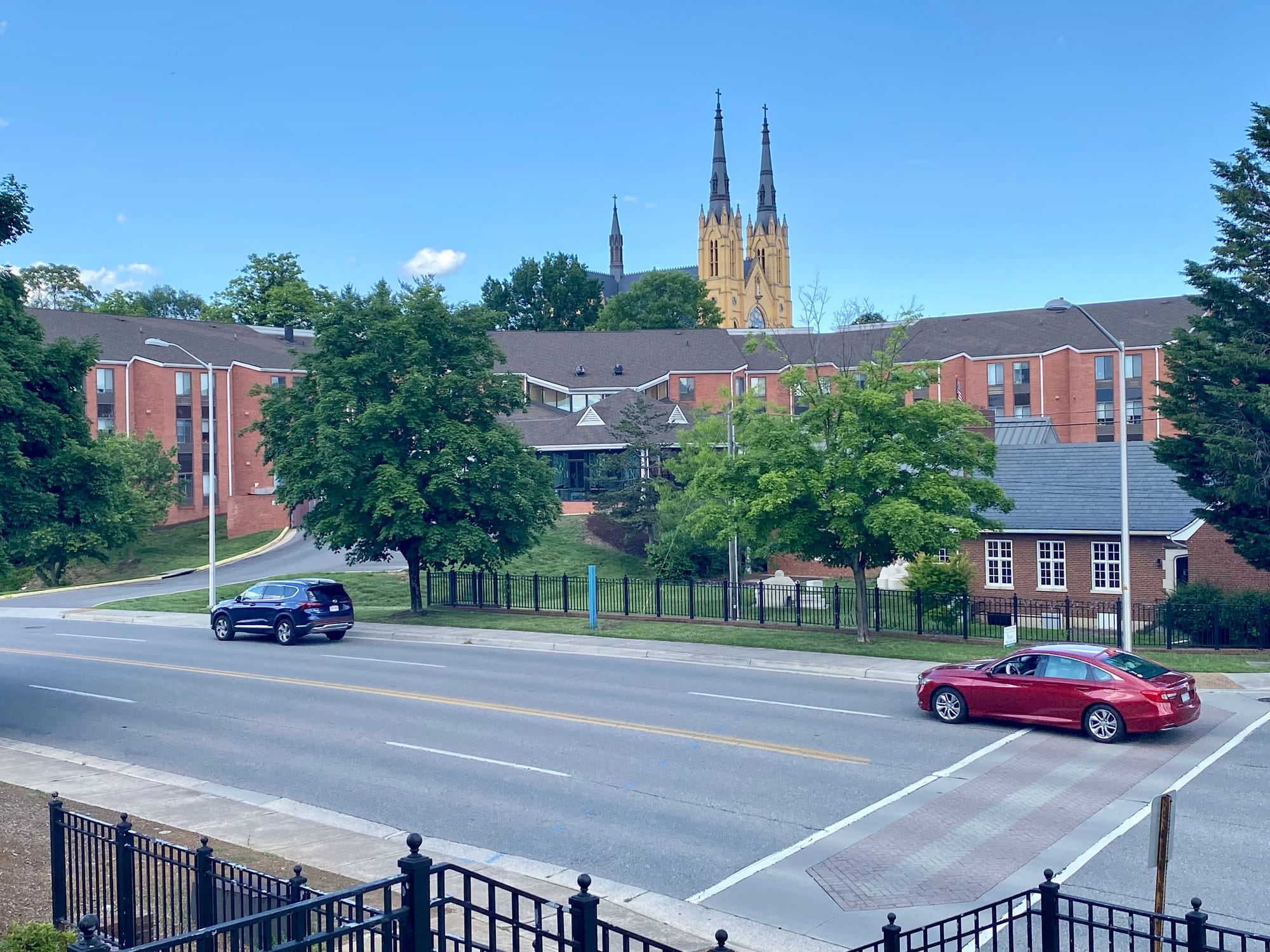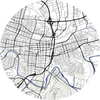Ramblings: City Eyes Gainsboro Road for Makeover; School Board Approves Student IDs; Police Use of Force Increases
What are Ramblings? Ramblings are a collection of short items that have caught our attention for one reason or another.
What are Ramblings? Ramblings are a collection of short items that have caught our attention for one reason or another. We’re on the lookout for tidbits related to money in politics, data, business, civic engagement or interesting events. Think you know of something that could be a Rambling? Drop us a line at editor@roanokerambler.com and we may well write about it. Happy reading!

Roanoke aims to reduce Gainsboro Road car lanes
Thirty years after widening a main road in Gainsboro, the city is working with residents to shrink the thoroughfare back down.
A makeover of Gainsboro Road is meant to increase pedestrian safety by reducing car lanes from four to two and adding dedicated paths for cyclists. The streetscape change is expected to cost about half of $5 million in pandemic relief funds earmarked for the neighborhood.
An open house meeting is planned from 5:30 to 7:30 p.m. Thursday at the Gainsboro Library (15 Patton Ave. NW) to share preliminary street designs.
One proposal is to install a two-way mobility track — for bicyclists and scooters — on the west side of Gainsboro Road, with parking on the east side. Another option involves single-direction bike lanes on both sides of the road. New pedestrian signals are also planned.
Reducing traffic lanes is designed to slow down cars, which routinely speed above the 25-mile-per-hour limit.
Gainsboro’s two neighborhood groups and city officials prefer the option with parking, said Wayne Leftwich, city planning manager, who has been meeting with residents for months. Thursday’s meeting is meant to gather additional input from residents.
Following recommendations from a citizens panel, city leaders initially envisioned starting a healthcare and small business development hub in Gainsboro, centered on the historic and dilapidated Claytor Clinic building. After negotiations broke down between city officials and Claytor family members, the city abandoned those plans.
Instead, the money from the American Rescue Plan Act will go toward the roadway upgrades, outdoor public gathering spaces and owner-occupied housing repairs. Resident feedback, including in a recently adopted community hub plan, guided those investments.
The streetscape project will be under contract this year, with construction beginning next year, according to Leftwich.
At a March community meeting, some residents acknowledged the grant money had to be spent soon but questioned why the city couldn’t use normal transportation funding as it did in the 1990s to widen Gainsboro Road. That project came amid an expansion of Hotel Roanoke and widening of Wells Avenue, which prompted neighborhood opposition at the time.
Student IDs to roll out in Roanoke schools
Starting in the fall, Roanoke City Public Schools students who ride buses or attend high schools will carry identification badges.
The school board voted unanimously Tuesday to that first phase of a student ID program, which is expected to extend to more children at a later date.
School administrators cast the IDs as a public safety issue, saying they’ll allow staff to easily identify who belongs on school property. Teachers and staff already wear IDs.
Student IDs will also come with a technological component that will allow children to get lunch at the cafeteria, check out at the library, access online educational materials and more.
Since the idea was first floated in 2022, the district has completed pilot projects at several schools. Children expressed excitement about wearing the IDs and felt a sense of responsibility, school officials reported.
The district’s new bus contractor, Zum, will allow parents to confirm their child’s ridership through the ID badges, which it will provide for students who ride the bus.
Police reported uptick in using force
A short-staffed and overworked police force could explain an increase in uses of force against citizens last year, the Roanoke Police Department said in a report this month.
Officers used force against residents in 323 situations in 2023, up from 241 in 2022, and the highest figure in several years, according to the analysis and past reports. The department notes officers did not use force in 99.7 percent of their interactions with residents.
The definition of force includes displaying a handgun, deploying pepper spray or physically restraining someone, for example. The most common reason police used force was because a suspect was fleeing or resisting arrest, the report says.
“The use of physical force remained the overwhelming type of force used, indicating that officers were able to gain control of the situation at the lowest level of force needed and were less likely to have to escalate to a more severe type of force,” the report says. “However, it is impossible to ignore the sharp increase in uses of force throughout the department despite fewer citizen contacts.”
Officials theorized that long-term staffing shortages have resulted in stressed and fatigued officers, “potentially leading to a higher likelihood of the use of force.” About half of citizens involved were high on substances or experiencing a mental health crisis, the report says.
Last year, 49 residents reported injuries, most of which were minor, after interactions with police. In December, police fatally shot one man after he fired at officers; one officer was shot and seriously injured for the first time in 20 years.
The report acknowledges the police force “underwent significant transformation” in 2023, including “abrupt changes” in top leadership, the arrival of Police Chief Scott Booth, and “a high level of staffing shortages.” Last year, Roanoke also saw a record number of homicides.
The department has since restaffed its community engagement unit and is filling recruit classes more quickly. The report says that beginning this year the agency will implement new training aimed at helping officers deescalate situations and reduce the likelihood of using force.

